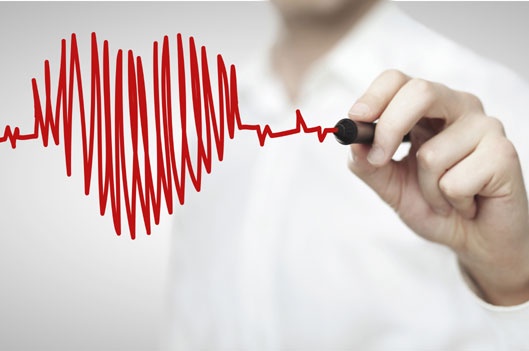Key warning signs detectable before sudden cardiac arrest
By Nancy DiFiore
When a woman collapsed in a village fair in Oswego, Illinois, last summer, she was extremely fortunate that Darice Bohne, a coronary intensive care nurse at Rush, was nearby. Bohne administered CPR until paramedics arrived and revived her.
The woman had suffered sudden cardiac arrest, a condition that causes half of the heart-related deaths in the U.S. each year. Fewer than 10 percent of Americans survive sudden cardiac arrest, according to the American Heart Association.
“Cardiac arrest can carry a very high mortality. The reason is most patients who have cardiac arrest do so outside of the hospital environment, and without immediate intervention either by emergency medical services or a bystander trained in CPR, the patient often will die," says Clifford Kavinsky, MD, cardiologist at Rush University Medical Center.
That's why it's important for the general public be trained in basic life support, Kavinsky says, noting that everyone should know where the nearest automatic external defibrillator — or AED — is located.
"These can be life-saving,” he says.
Until now, a sudden cardiac arrest was considered a death sentence, but recent studies suggest that there may be warning signs possibly days or weeks ahead of time. Findings published in Annals of Internal Medicine in January suggest that patients experiencing chest pain outside of the health care setting who called 911 before experiencing a sudden cardiac arrest were more likely to survive. The study showed that symptoms such as chest pain can appear beforehand, but in most cases are ignored.
An electrical storm in the heart
During sudden cardiac arrest, there is an abnormal “electrical storm” and the heart with often beat extremely fast, so fast, in fact that it no longer pumps blood effectively. Blood pressure drops and the patient quickly loses consciousness. It is not the same as a heart attack, which is caused by obstructions in the blood vessels that supply the heart.
“A heart attack can be treatable and preventable. Someone experiencing a heart attack usually expresses symptoms of chest or shortness of breath although patients with a heart attack can experience cardiac arrest,” Kavinsky says. “In contrast, many patients experiencing sudden cardiac arrest often will have no warning.
More than 325,000 Americans suffer sudden cardiac arrest outside of the hospital each year, according to the American Heart Association. About 9,500 cardiac arrest cases each year involved children and teenagers, it reported in 2013.
Men are disproportionately affected by sudden cardiac death, but survival differences between men and women have not yet been closely examined. Sudden cardiac death can occur in a person with or without a preexisting heart condition.
Those who may be at risk for a sudden cardiac arrest include those who have previously experienced a heart attack, heart failure, or sudden cardiac arrest. Also at risk are people with a family history of sudden cardiac arrest.
Preparedness, quick action can save lives
Because of Bohne’s quick action, the woman she helped in Oswego suffered no brain damage. She was in the hospital for only four days, and a defibrillator was placed in her chest to help keep her heartbeat regular. In recognition of Bohne’s life-saving action, the American Red Cross of Greater Chicago will honor Bohne with the 2016 nurse hero award at an event in April.
In 2011, only 10.6 percent of more than 326,000 people who experienced cardiac arrests outside of a health care setting survived, according to a report by the American Heart Association. But of the 19,300 cases in which victims had a heart rhythm that could be treated effectively and had help nearby, 31.4 percent survived.
“Early intervention with CPR or AED increases the chances of surviving a sudden cardiac arrest. It’s important to emphasize the importance of educating people about what to do if they witness this type of emergency,” Kavinsky says.
Rush offers training in CPR (cardiopulmonary resuscitation) and the use of defibrillators. For more information, please call (312) 942-3556 or email CPR_rush@rush.edu.

